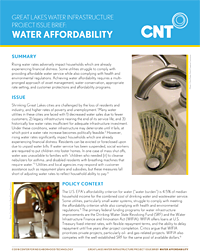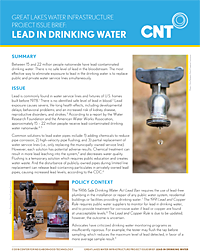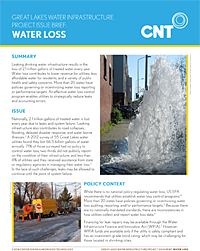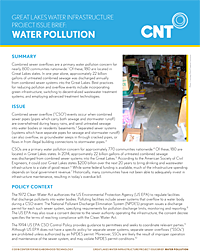Briefs
 Water Affordability
Water Affordability
Rising water rates adversely impact households which are already experiencing financial distress. Some utilities struggle to comply with providing affordable water service while also complying with health and environmental regulations. Achieving water affordability requires a multipronged approach of asset management, water conservation, appropriate rate setting, and customer protections and affordability programs.
Download PDF Lead in Drinking Water
Lead in Drinking Water
Between 15 and 22 million people nationwide have lead-contaminated drinking water. There is no safe level of lead in the bloodstream. The most effective way to eliminate exposure to lead in the drinking water is to replace public and private water service lines simultaneously.
Download PDF-
 Water Loss
Water Loss
Leaking drinking water infrastructure results in the loss of 2.1 trillion gallons of treated water every year. Water loss contributes to lower revenue for utilities; less affordable water for residents; and a variety of public health and safety concerns. More than 20 states have policies governing or incentivizing water loss reporting or performance targets. An effective water loss control program enables utilities to strategically reduce leaks and accounting errors.
Download PDF -
 Water Pollution
Water Pollution
Combined sewer overflows are a primary water pollution concern for nearly 800 communities nationwide.1 Of these, 180 are located in Great Lakes states. In one year alone, approximately 22 billion gallons of untreated combined sewage was discharged annually from combined sewer systems into the Great Lakes. Best practices for reducing pollution and overflow events include incorporating green infrastructure; switching to decentralized wastewater treatment systems; and employing advanced treatment technologies.
Download PDF





 Strengthening Transit Through Community Partnerships
Strengthening Transit Through Community Partnerships

